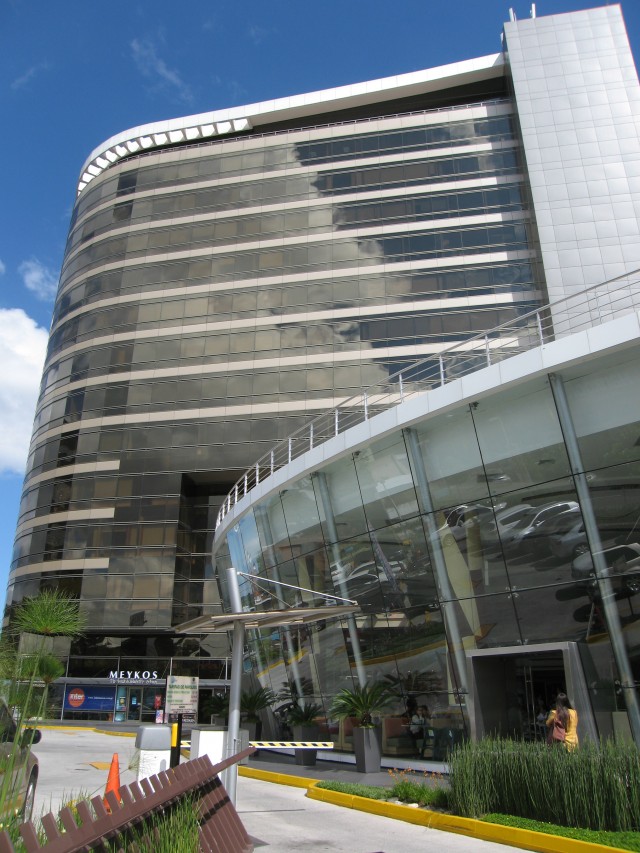
All of Your Medical Tourism Questions: Answered!
By: Akaisha Kaderli
Skip to Section
- Article Summary
- Q: I have heard the term “Medical Tourism,” but what exactly is it?
- Q: Is Medical Tourism expensive? And how does one choose a hospital or country?
- Q: What about follow up appointments and therapy?
- Q: What happens if something goes wrong, say my knee replacement doesn’t work properly?
- Q: What about dental care? Do overseas clinics offer that as well?
- Q: Do you know of anyone that actually has done this, say have a hip replaced or dental work done?
- Q: What did your accident in Guatemala cost you?
- Q: Billy also had a health issue that landed him in the hospital for a few days. Tell us about that.
- Q: What about insurance? Will my North American insurance cover me?
- Q: How is Medical Tourism different from employer-sponsored medical travel?
Article Summary
Medical tourism can give you access to affordable, high-quality care in countries like Guatemala, Thailand, and India—especially if you’re uninsured or stuck with sky-high deductibles at home.
This FAQ covers the most common concerns about getting medical or dental care abroad, including cost, insurance, follow-ups, and what happens if something goes wrong. Real-world examples and dollar amounts help paint a clear picture of how it all works.
- Major procedures overseas often cost 70–90% less than in the U.S.—and you’ll know the price upfront.
- Look for hospitals with JCI accreditation and concierge services that bundle travel, care, and follow-up.
- Adverse outcome insurance can protect you if something goes wrong.
- Dental work is a popular option—routine and complex procedures can cost thousands less abroad.
- Personal stories from the authors add context and credibility, including emergencies handled in Guatemala for a fraction of U.S. prices.
Because Billy and I live a lifestyle of travel, we often get readers asking us basic questions about medical tourism. Below we have the answers to some of the most common questions we get asked. How do you know if this option will work for you? The following should help you decide.

Private operating room in Guatemala City.
Q: I have heard the term “Medical Tourism,” but what exactly is it?
A: Generally, Medical Tourism refers to going elsewhere other than your own city or state to receive medical care. For example, people in the U.S. have been going out of their home state to Mayo Clinic or Cleveland Clinic for years, and no one thinks twice about it. Canadians will come to the U.S. for procedures perhaps because they don’t want to deal with long waits in their own home country or maybe they have other personal reasons.
Today, there are dozens of countries like Thailand, Mexico, Costa Rica, India, Guatemala, Singapore and the Philippines which offer excellent medical care delivery in ultra-modern facilities for very affordable prices.
The importance of medical tourism – and this cannot be overstated – is that its availability offers options to those who are:
- Under-insured
- Self-insured
- Not insured and,
- For procedures not approved in the USA (or the patient’s home country).
Q: Is Medical Tourism expensive? And how does one choose a hospital or country?
A: In terms of budgeting for medical tourism, we think it’s a good idea to have an emergency fund, or institute your own style of a Health Savings Account, where you only utilize that money for health related issues.
When you purchase medical care overseas, you will know how much it will cost before you purchase. There is no guessing game because you check off what you want as if from a menu. If you want to have an “Executive Physical” for instance, you can choose all the features you would like: lung x-ray, bone density test, colonoscopy, full panel blood tests, and so on, and with every choice, your total at the bottom of the page changes. You see beforehand what your cost outlay will be and what price everything is individually.
The delivery of medical care in the States is expensive and out of the reach of many. If you have a high deductible, and you go out of network, sometimes that deductible doubles.
Treatment in the States for a heart condition or cancer can cost hundreds of thousands of dollars. Not so overseas.
A heart valve replacement in the States can cost $170,000, but will run you $24,000 in Guatemala City. Chemotherapy in the States runs about $75,000, but is under $20,000 in Guatemala City. A bone marrow transplant can cost up to $200,000 in the U.S., but will run up to $25,000 in India. A spinal fusion runs between $80-100,000 in the United States, but will cost you $6-10,000 overseas.
There are many medical tourism concierge services available and websites of hospitals in various countries have their prices listed for procedures.
One way that you can ease your mind is to look for hospitals that have JCI accreditation. Joint Commission on Accreditation of Healthcare Organizations International gives foreign doctors and hospitals endorsement and makes sure that they have the proper training and use proper procedures. Doctors are board certified or have similarly high standards of accreditation and this organization is highly respected in the United States.
Q: What about follow up appointments and therapy?
A: Some of the above quoted pricing includes follow up appointments, therapy and general medications. You will need to research which company you use to see all of what is included in the personalized package you require. Depending on which company is chosen and the package you purchase, rehabilitation, medication and follow up care is included in the price.
Q: What happens if something goes wrong, say my knee replacement doesn’t work properly?
A: This is an excellent question and often people stop pursuing the subject right here, assuming there is no assistance for them if something goes wrong. Shopping for a medical service provider overseas is to be taken seriously.
For those who are especially concerned about this, you can purchase “adverse outcome” insurance in the States before a procedure is done. The U.S. based company will pay out if a face lift or hip replacement goes awry.
Also, some concierge services offer included their packages, follow up visits, physical therapy and adverse outcome options.
Q: What about dental care? Do overseas clinics offer that as well?
A: Some countries excel in dental surgeries and mouth restoration. Even if you want routine work such as a root canal, bridge or crown, the money you save by having it done elsewhere can pay for your trip. If you have several dental implants done overseas, you can save a significant amount of money.
Q: Do you know of anyone that actually has done this, say have a hip replaced or dental work done?
A: Because we have been traveling the world now for over two decades, we know quite a few people who have had dental care and serious medical treatment overseas. A tennis friend of ours had his hip replaced in Guadalajara, Mexico for $9,000 a few years ago and now plays tennis five and six times a week. I have personally had root canals, crowns and a bridge done in Thailand, Mexico and Guatemala, and another friend of ours has had several successful dental implants performed in Oaxaca, Mexico.
If we get sick when we travel overseas or have an emergency, we want medical attention as soon as possible. We don’t consider “going home” for treatment. Lots of long term travelers feel the same way. Once you experience the quality of healthcare abroad and the personal treatment that is given to you – and this includes house calls to your home or hotel room, and the personal cell number of your doctor – you find that you’re in very good hands and can relax.

Hyperbaric Chamber
Q: What did your accident in Guatemala cost you?
A: I unexpectedly had my ring finger de-gloved in Antigua, Guatemala in the autumn of 2012. I received excellent emergency care, and then required a hand surgeon, hyperbaric chamber therapy and two surgeries. After 10 chamber treatments, 11 visits with the plastic surgeon, 2 surgeries, and a private driver to take me to the capital city and back each day, the total cost was under $3,000USD, and that included medications.
Q: Billy also had a health issue that landed him in the hospital for a few days. Tell us about that.
A: Billy had an emergency medical situation that required a midnight drive to the hospital from Panajachel, Guatemala to the capital city. After two nights in the hospital, CT scans, x-rays, blood tests, medicines, translator fees, private doctor visits, and a private driver, the cost was $1,600 USD. He also received excellent care.
Q: What about insurance? Will my North American insurance cover me?
A: It depends on your plan. Ours had a large deductible, which was doubled for out of network providers so we simply paid out of pocket for these emergencies. However, some Stateside insurance plans are now offering an overseas medical tourism option as a way to save the provider money and they will cover the cost of travel and the medical procedure. Many hospitals overseas advertise that they accept insurance from your home country. So, you must take a look at your health coverage plan, and compare hospitals and medical tourism companies to see which works best for you.
Q: How is Medical Tourism different from employer-sponsored medical travel?
A: In some respects it is not different at all, in that one would be receiving medical care outside of your home city or home state. However, the big difference is that in employer-sponsored medical travel, the employer pays for the procedure and probably has a list of accepted hospitals and doctors from which to choose. In full-fledged medical tourism, you, the patient would be locating the hospital, comparing prices, arranging for your air flight and transport to the hospital and so on. This is where the concierge services come in handy, as they offer you packages where door-to-door service is covered in one price.
Often a traveling companion is included and encouraged, so that you are not alone. Their hotel or living quarters can be near to or adjoining the hospital.
For more information on Medical Tourism, see our Medical Tourism Page.

The medical building in Guatemala City
About the Author
Billy and Akaisha Kaderli are recognized retirement experts and internationally published authors on topics of finance, medical tourism and world travel. With the wealth of information they share on their award winning website RetireEarlyLifestyle.com, they have been helping people achieve their own retirement dreams since 1991. They wrote the popular books, The Adventurer’s Guide to Early Retirement and Your Retirement Dream IS Possible available on their website bookstore or on Amazon.com.Featured image via Unsplash. All other images courtesy of the authors.
Information published on this website and across our networks can change over time. Stories and recommendations reflect the subjective opinions of our writers. You should consult multiple sources to ensure you have the most current, safe, and correct details for your own research and plans.
Frayed Passport is a participant in the Amazon Associates Program, an affiliate advertising program designed to provide a means for sites to earn advertising fees by advertising and linking to Amazon.com. We also may share links to other affiliates and sponsors in articles across our website.




